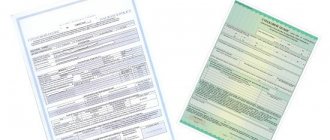An entrepreneur who decides to use the leasing service will definitely be faced with a choice: what type of this service to use. Leasing is provided in two forms: financial and operational (also called operational). The difference between these forms of service lies in the duration of the leasing agreement and the conditions under which the object of the leasing transaction is transferred. In order not to make a mistake and choose the form that is best suited in a particular situation, it is necessary to distinguish between types of leasing and clearly understand their features.
financial leasing
What is financial leasing? We offer a detailed overview of this type of financing with an analysis of the conditions and an analysis of the pros and cons. Financial leasing is a method of financing in which one party (the lessor) undertakes to purchase specific property from the seller and transfer it for temporary long-term use to the other party to the transaction (the lessee). In this case, the recipient of the leased asset undertakes to make regular payments throughout the entire term of the contract, essentially paying its full cost. At the end of the lease agreement, the lessee purchases the property.
Financial vs operational leasing: comparison
| financial leasing | Operational leasing | |
| Possession | The property is owned by the leasing company throughout the entire term of the contract with the right to purchase (including to a third party) | The property is owned by the leasing company throughout the entire term of the contract and at its end. |
| Possibility of redemption | The client can purchase the property after making all lease payments or ahead of schedule. | The client does not have the option of redemption. |
| VAT | For payments for leasing and purchase price, tax is fully deductible. | |
| Income tax | Leasing payments and purchase price are recognized. If the redemption value is less than 100 thousand rubles, the tax is written off as a one-time material expense. | Leasing payments are recognized, but there is a risk of accrual of accelerated depreciation on leased property of group IV. |
When and to whom is financial leasing suitable?
This method of obtaining property is suitable for companies for which the required service life is close to the possible useful life. In this case, it makes sense to buy the property at the end of the contract and take ownership of it. This method still remains the most accessible and reliable if the company does not have enough of its own resources, but it is necessary to use the asset and make a profit from it now.
Characteristic features of financial leasing
- The leasing company buys the property not for its own use, but in order to transfer it for long-term lease to the client.
- To purchase the leased asset, the lessor can use his own or borrowed funds.
- The lessee can choose the seller of equipment, vehicles and other leased items based on his budget and the specifics of the business.
- The Seller/Supplier is notified that its goods are being purchased under leasing terms, so the purchased property is supplied directly to the lessee, and not to the leasing company.
- In the event that problems arise with the operation of leased equipment, the lessee must file claims with the seller/supplier.
- The lessee is responsible for the leased property, so he must ensure safe operating conditions and insure it.
Features of operational leasing
Operating leasing refers to rental relationships during which the equipment does not fully depreciate and can be re-rented. Applicable when concluding short-term contracts. Therefore, the costs of purchasing and maintaining the property are not covered by payments received from a single contract.
Features of operational leasing
This type of leasing has the following features:
- The duration of the leasing agreement is much shorter than the standard service life of the leased object. Therefore, one contract cannot cover the costs arising in connection with the purchase and maintenance of the property.
- The lessor must be well aware of the peculiarities of the equipment market. After all, he does not specifically buy property for a specific client, but transfers available equipment. Therefore, in order to fully satisfy the needs of potential customers, it is necessary to thoroughly study the market for both new and used equipment.
- Property is leased more than once.
- The lessee may initiate termination of the contract if, due to certain circumstances, the property cannot be used for its intended purpose.
- The leasing company carries out repairs and maintenance of equipment at its own expense.
- All risks of accidental damage to property are borne by its owner.
- Lease payments are significantly higher than with financial leasing. This situation is explained by additional risks, in particular, the property may be damaged or it may no longer be possible to rent it out.
What property acts as objects?
In most cases, a variety of equipment is transferred under operational leasing, ranging from used cars to computer equipment. The leasing company purchases it in advance, without yet having an application from a specific tenant.
Property that has already been leased can be re-transferred to the lessee, but on more favorable terms. The tenant can also purchase it at market value, taking into account the level of wear and tear. If there is no longer a need for such property, then at the end of the contract it is returned to the lessor.
Advantages and disadvantages of operational leasing
The main advantage of operational leasing is the fact that it allows you to avoid the risks that arise when owning property, namely:
- decrease in profitability as a result of falling demand for manufactured products;
- increased costs caused by equipment downtime.
Thus, operating leasing is very profitable to use in the following cases:
- if the equipment is rented for one-time use or for a season;
- the transaction is for new equipment and its use requires special maintenance, the cost of which is included in the lease payments.
As for the disadvantages, operational leasing has the following disadvantages:
- As a rule, certain restrictions are established in relation to the leased object. For example, determining the maximum mileage per year for a car.
- The increased cost of this service compared to financial leasing due to additional services included in payments. The lessee must also compensate for the risk of not being able to re-lease equipment that has not yet been fully depreciated.
- It is unlikely to receive a leased item that fully meets all the tenant's requirements. After all, the equipment is purchased by the leasing company in advance and the lessee has to choose the most acceptable option from the available equipment.
Features of the leasing agreement
There are several pitfalls in the contract that can turn the deal into an unprofitable one. It is necessary to carefully study the list of services that form leasing payments. The leasing company should insist on including the costs of repairing equipment and its preventive inspection. This will make it possible to maintain the equipment in good condition and re-rent it out.
An important condition is the formalization of the end of the relationship. Under the terms of an operating lease, the lessee must return the equipment upon completion of the contract. The agreement must clearly indicate the deadlines and also describe the sequence of actions to be performed. As for the lessee, he should stipulate in the contract a clause according to which he has the unconditional right to terminate the contract if the equipment cannot be used due to its unsuitability.
Leasing agreement
The terms of cooperation between the parties are regulated by the leasing agreement. Parties to the leasing transaction:
- Seller/Property Provider.
- The buyer is a leasing company.
- The user is the lessee.
- The insured is an insurance company.
The agreement specifies the details of all parties to the transaction, their rights and obligations, conditions for the supply of property, the amount of regular leasing payments, and the repayment schedule. Each party to the transaction pursues its own goals: the seller wants to sell his goods; lessor - earn interest on financial lease; the lessee is able to purchase equipment without loans and guarantors, update means of production without high costs.
Advantages of financial leasing
- The down payment is minimal. The amount of the advance payment can be from 10, and for some leased items even 5 percent.
- The requirements for the financial condition of the lessee are not as high as in the case of bank lending. Even a company that has been on the market for only 3 months can purchase property on lease (not all leasing organizations operate under such conditions).
- The lessee can distribute the burden on the budget evenly over the entire term of the transaction. The amount of lease payments can be adjusted by changing the term of the contract, the amount of the advance or redemption payment.
- Purchasing property through financial leasing often involves discounts and additional bonuses for the lessee.
- Tax benefits and depreciation benefits.
- Regular leasing payments are taken into account as expenses (cost), so the taxable profit base is reduced.
- Refund of value added tax on leasing property up to 20%.
The key advantage of financial leasing is the ability to quickly and on favorable terms acquire the fixed assets necessary for a business, update and expand the production base. A special advantage is the long transaction period of up to 10 years, after which the leased property becomes the property of the lessee.
Fill out the form online and we will select a profitable and suitable leasing program
Comparison of operational and financial leasing
The main difference between these two agreements is that with the first there is no need for full compensation of the lessor's costs by the second party under the agreement. With finance, there is such an obligation. Main characteristics
The participants in such relations are three persons:
- Lessee is the entity that uses the property.
- Lessor is the company that owns the property.
- Seller is the entity that delivered or sold the property.
The object of operational leasing may be:
- commercial or industrial equipment;
- various types of equipment (in particular, loading and agricultural);
- road transport (we are talking about both cars and trucks);
- real estate (office and industrial premises, retail space, etc.).
It should be remembered that operating leasing does not imply the acquisition of property. These are contractual relations related to the temporary use of certain objects.
| Operational | Financial |
| This agreement is similar to a long-term lease | This type of relationship can be compared to a long-term loan or installment purchase |
| The lessee is not obliged to compensate for the costs incurred as a result of the operation of the item. | Responsibilities for maintaining the functional condition of the received property are transferred to the lessee |
| The contract is for 2 years or less | Usually issued for a period of at least 5 years |
| The lessee does not need borrowed funds | Requires raising large amounts of funds from outside to cover contract costs |
| Ownership rights remain with the lessor | Ownership rights arise from the lessee |
| There is no possibility of repurchase of property | You can pay off the debt and become the owner of the leased asset ahead of schedule |
| The amount of payments that you will make during the period of use of the property usually does not exceed 90% of the value of the property recorded at the time of conclusion of the contract | The amount of all payments is approximately equal to the market value of the property |
Rent or purchase
The fundamental difference between the different forms of leasing is that operating leasing is more like a long-term lease. The object of the agreement is transferred for use for a monthly fee, and at the end of the agreement it may not be purchased, but returned to the lessor. After this, the object can be leased out again to other clients. Financial leasing is more of an installment purchase. The leased object, transport or equipment, after the end of the agreement and payment of the difference between the cost and the amount of lease payments, necessarily becomes the property of the client. If you compare the cost, then operating leasing is always much more expensive.
Specifics of operational car leasing
A car is one of the most common and sought-after operational leasing objects.
The reasons for the popularity of car leasing are its many advantages compared to renting, purchasing or financial leasing, including accessibility and variety of offers.
Leasing of passenger cars, especially executive cars, is often used by large companies. This method allows you to avoid the diversion of significant amounts from turnover, the costs of registration and state registration, simplifies accounting, and eliminates the issues of maintenance and repair.
The same reasons encourage operational leasing of cars for taxi companies, rental companies, urban route transport enterprises and companies involved in cargo transportation. Mileage restrictions imposed by the lessor may be an obstacle.
The advantages are obvious:
- Fast processing (up to three days).
- Relative (compared to purchasing on credit) cheap.
- The possibility of assigning leasing payments to the cost part of the balance sheet, which entails a reduction in the tax base.
- Significant reduction in property taxes.
- Using the vehicle for three years, the company constantly maintains the good operating condition of its technical fleet.
- There is no problem of selling old and worn-out cars.
During the term of the agreement, the vehicle is temporarily registered with the lessee, while being permanently registered with the lessor.
Of course, operational car leasing also has various disadvantages, but the demand for this service in Russia is growing.
Timing and amortization
The market in which operating leasing is most common is the automotive market. The reason for this is the predictability of changes in the value of an asset in the car market over time. The list of cars available for leasing today includes almost all brands and models presented on the domestic market. Recently, leasing companies have significantly expanded their offer, since this service can now also be used by individuals. Despite the prevalence of this service, the volume of financial leasing is incomparably larger, because most clients of leasing companies prefer to buy out the leased object as their own. Another significant argument when choosing a form of leasing is the opportunity to optimize the tax burden for a business. The financial leasing agreement is concluded for a period corresponding to the depreciation period. For operational leasing, the agreement lasts less than the depreciation period of the equipment, which will subsequently be used by new clients of the leasing company.
Hassle-free operating leasing
At the moment, operating leasing is not so common in Russia. To develop this service in the country's market, certain conditions must be met. The main one is the developed market for various types of secondary property. Its presence allows the lessor to adequately calculate the cost of the equipment provided and returned and weigh its risks. The cost of operating leasing is also several times higher than financial leasing. The reason for this is the need to organize a whole range of equipment maintenance services that the leasing company provides to clients. The client is spared from performing such tasks as routine repairs and seasonal maintenance of vehicles, undergoing technical inspection, etc. Such conditions are beneficial for small companies that need a fleet of vehicles, but do not have the ability to support all these complex business processes. The underdevelopment of the market, the complexity of organizing processes and high costs lead to the fact that only a few leasing companies offer operating leasing services.
No need to own
At the round table “Operational leasing. Pros and cons of operational leasing for companies operating in Russia” experts spoke mainly about the advantages of this instrument.
Operating leasing began to actively develop in 2004. Financial leasing is more common in Russia. In this case, the property is on the balance sheet of the lessee, and the ownership right also passes to him. The main difference between operational leasing is that the property is on the balance sheet of the lessor and ownership does not pass to the lessee. In essence, this is a long-term lease, the object of which can be cars, railway transport, office and construction equipment, real estate (offices, retail space). According to ARVAL Russia CEO Sergei Dianin, this year the largest growth in operational leasing in Russia was recorded in the railway transport segment (cars).
Experts say that the use of operational leasing is beneficial for both large companies and medium and small businesses. Meanwhile, in Europe, only in the last 2-3 years has there been a tendency to use this tool by small companies with a staff of no more than a dozen people. The main benefits of operating leasing include reducing costs and increasing efficiency, reducing headcount, outsourcing non-core activities, transferring risks, and outsourcing management and administrative work to a third party. Also, a company using operational leasing is more attractive to investors and creditors, since it does not have non-core assets on its balance sheet.
According to a survey by the Corporate Fleet Observer, small and medium-sized companies cite the ability to control the budget as the main benefit of using operating leasing, while large companies cite outsourcing of services and administration. “As practice shows, European companies outsource all functions related to the maintenance of corporate fleets. In Russia, they prefer to keep management functions for themselves and outsource only part of it - for example, insurance,” says Sergey Dianin. According to him, the specifics of the domestic market are also related to the fact that people in Russia are used to owning. However, the absence of ownership rights in operational leasing is an advantage, not a disadvantage, the expert is convinced. And the costs of a corporate vehicle fleet with operational leasing are from 17% to 34% lower than the costs of a corporate vehicle fleet owned and managed by the company.
Today, there are 10-12 players on the Russian operational leasing market, the largest of which are Sberbank Leasing and VTB Leasing. The peculiarities of using this tool in Russia are associated with a low level of knowledge about the product, as well as the lack of official statistics on the market. Difficulties in using operational leasing are also associated with infrastructure and an insufficient number of suppliers in the regions. Despite the difficulties, experts are optimistic about the prospects for operational leasing in Russia. According to their forecast, by 2014 the growth of this segment will be more than 160% compared to 2010.
Financial leasing as an alternative to credit
The majority of clients of leasing organizations are small companies that do not have the opportunity to withdraw large sums from circulation to purchase equipment, and at the same time, for various reasons, cannot take out a loan for these purposes from a bank. For example, a bank sets strict requirements for small and medium-sized businesses when issuing a loan, but leasing companies do not. Thus, using leasing, although the client overpays, he gets the opportunity to update and expand the base of fixed assets without the need to withdraw significant amounts from circulation.









